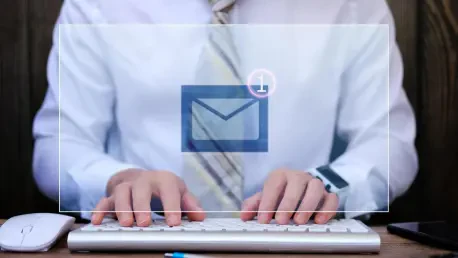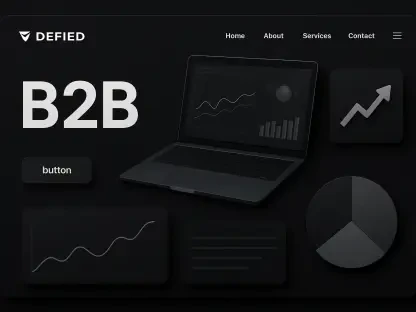Picture this: a carefully crafted batch of cold emails hits inboxes, and within hours, responses start pouring in—not just automated replies or dismissive notes, but meaningful engagements signaling genuine interest from prospects. Cold email remains a formidable tool for sparking sales conversations, particularly in B2B and high-ticket service industries, boasting a return on investment often pegged at an impressive 42:1. Yet, despite its potential, countless campaigns fall flat, buried under the weight of outdated strategies and a failure to resonate with recipients. The secret to turning this around doesn’t lie in sending more emails or using flashier tools; it’s rooted in a fundamental change in perspective. This article explores how a subtle but powerful shift in mindset can dramatically increase reply rates, transforming cold outreach from a numbers game into a pathway for authentic connection and measurable success.
Unlocking the Potential of Cold Email Today
Cold email continues to hold a unique position in the digital marketing landscape, standing tall amidst the rise of AI-driven advertising and social selling platforms. Its strength lies in the ability to directly reach decision-makers with a hyper-targeted message, offering a level of personal engagement that broader channels like paid ads struggle to match. The cost-effectiveness of this approach, combined with its measurable outcomes, makes it a preferred choice for businesses aiming to maximize impact without breaking the bank. However, the hurdle many face is cutting through the clutter of overflowing inboxes. With recipients bombarded by countless messages daily, the risk of being labeled as spam or simply ignored looms large. Success in this space demands more than just persistence; it requires a strategic approach that prioritizes relevance and connection over sheer volume, setting the stage for a deeper understanding of what truly drives responses.
Navigating the challenges of cold email means recognizing that its effectiveness hinges on perception. A generic pitch, no matter how polished, often fails to capture attention in a world where personalization is expected. The data speaks for itself—campaigns that fail to adapt to modern expectations see dwindling reply rates, often dipping below industry benchmarks. This isn’t just about crafting a better subject line or tweaking the call-to-action; it’s about understanding the recipient’s mindset. Are they feeling overwhelmed by irrelevant outreach? Are their needs being addressed, or are they just another name on a list? Addressing these unspoken questions can transform a cold email from an annoyance into an opportunity. By focusing on the elements that make this channel so powerful—direct access and tailored communication—businesses can begin to see why cold email remains a cornerstone of effective sales strategies, provided it’s executed with precision and care.
Transforming Outreach with an Empathetic Mindset
The key to doubling reply rates in cold email campaigns isn’t found in complex software or endless A/B testing, but in a fundamental reframing of intent. Traditional outreach often carries an overtone of self-interest, with messages that subtly—or not so subtly—scream “buy from me” or “book a call.” This approach tends to alienate recipients who can sense desperation or transactional motives from a mile away. Instead, consider flipping the script to focus on helping rather than selling. This empathetic mindset shifts the tone to one of sincerity, positioning the sender as a problem-solver rather than a salesperson. For instance, rather than pushing for an immediate meeting, a message might highlight a specific challenge observed in the recipient’s business and offer a relevant insight or resource. This small pivot can make the email feel less like an intrusion and more like a valuable conversation starter.
Implementing this mindset shift requires a deliberate approach to crafting messages that resonate on a human level. Start by researching the recipient’s industry, recent achievements, or pain points, and use that knowledge to tailor the content. A generic template won’t cut it; the goal is to demonstrate genuine interest in their success. Imagine reaching out to a tech startup struggling with user retention—pointing out a trend in their sector and suggesting a proven strategy to address it shows that the email isn’t just a shot in the dark. This method builds trust by proving the sender has invested time in understanding the recipient’s world. The result is a message that feels less like a cold pitch and more like a thoughtful gesture, significantly increasing the likelihood of a response. Over time, this helping-first philosophy can redefine how prospects perceive outreach, turning skepticism into curiosity and paving the way for meaningful dialogue.
Striking a Balance Between Automation and Personalization
In an era where technology can streamline nearly every aspect of outreach, automation tools and AI have become go-to solutions for scaling cold email efforts. These systems excel at handling repetitive tasks—scheduling sends, tracking opens, and managing follow-ups—freeing up time for strategic thinking. Yet, there’s a catch: relying too heavily on automation often results in messages that feel mechanical and detached, landing straight in the spam folder or being dismissed as irrelevant. True scaling doesn’t come from blasting out more emails; it emerges from smarter systems that prioritize segmentation and personalization. By dividing audiences based on industry, role, or specific challenges, and tailoring content to match, businesses can ensure their outreach feels targeted. Adding a human review step before sending can catch robotic phrasing, ensuring the message retains a personal touch that resonates with recipients.
Personalization isn’t just a buzzword; it’s the cornerstone of effective cold email in a crowded digital space. While automation can handle the logistics, the content itself must reflect a human connection to stand out. Consider segmenting a list into tiers based on the level of customization needed—high-priority prospects might receive fully bespoke messages, while others get a partially tailored template. This approach allows for efficiency without sacrificing impact. Additionally, focusing on specific pain points or recent events relevant to the recipient’s business can make even a semi-automated email feel uniquely crafted. The data supports this balance: campaigns with personalized elements consistently outperform generic blasts in both open and reply rates. By blending the speed of automation with the authenticity of human oversight, senders can create outreach that feels intentional, fostering trust and encouraging prospects to engage rather than ignore.
Harnessing AI While Preserving Human Connection
Artificial intelligence has emerged as a transformative force in cold email, offering tools that streamline research, predict the best times to send, and even draft initial message frameworks. These capabilities allow businesses to gather insights on prospects at scale, identifying key details like company size, industry trends, or recent news that can inform outreach. However, AI falls short when it comes to replicating empathy or understanding the nuanced emotional drivers behind a recipient’s decisions. A machine-generated email might check all the boxes for structure and keywords, but without a human touch, it risks feeling formulaic. The most effective campaigns use AI as a supportive tool—leveraging it for data collection and logistical efficiency—while reserving the crafting of tone and the building of rapport for human judgment. This hybrid approach ensures that messages remain concise, conversational, and infused with value that resonates on a personal level.
Maintaining that human connection in the age of AI requires a mindful balance of technology and psychology. While an algorithm can suggest optimal send times or highlight relevant topics, it’s the sender’s responsibility to weave those insights into a narrative that feels authentic. For example, if AI uncovers that a prospect’s company recently expanded, the email could reference this milestone and tie it to a relevant solution or idea, framed in a way that shows genuine interest. Keeping messages short and to the point also helps—recipients are more likely to respond to a brief, value-packed note than a lengthy, automated-sounding pitch. The evidence is clear: campaigns that prioritize human oversight alongside AI tools achieve higher engagement, as they combine efficiency with the warmth needed to build trust. This synergy allows cold email to evolve as a channel, meeting modern expectations without losing the personal spark that drives real conversations and lasting relationships.
Building the Future with Authentic Outreach
As digital communication continues to advance, the landscape of cold email is shaped by increasingly sophisticated inbox filters and ever-more discerning recipients. Success in this environment depends on relevance and authenticity, where generic, volume-driven approaches are quickly filtered out or ignored. Senders who stand out are those who treat each prospect as an individual, crafting messages that reflect a deep understanding of their unique context and needs. This isn’t about tricking someone into replying; it’s about earning their attention through purposeful outreach that feels personal. The shift toward building real relationships, rather than chasing quick wins, aligns with broader trends in business communication, where trust and value are paramount. Looking ahead, the ability to blend technological tools with genuine intent will define the leaders in this space, setting a new standard for what cold email can achieve.
Reflecting on past efforts, many businesses discovered that authenticity in outreach yielded unexpected dividends, turning cold contacts into warm connections over time. Campaigns that once struggled with low reply rates often found renewed success by focusing on empathy and relevance, crafting messages that spoke directly to a prospect’s challenges. The lesson was evident: technology could enhance reach, but only a human-first approach could sustain engagement. Moving forward, the next steps involved refining systems to prioritize quality over quantity, ensuring every email sent carried a spark of sincerity. Exploring ways to further integrate data-driven insights with personalized storytelling became a priority, as did training teams to think beyond the sale and toward mutual benefit. These actions, grounded in the insights gained, offered a clear path to not only doubling reply rates but also fostering partnerships that endured beyond the initial exchange.









